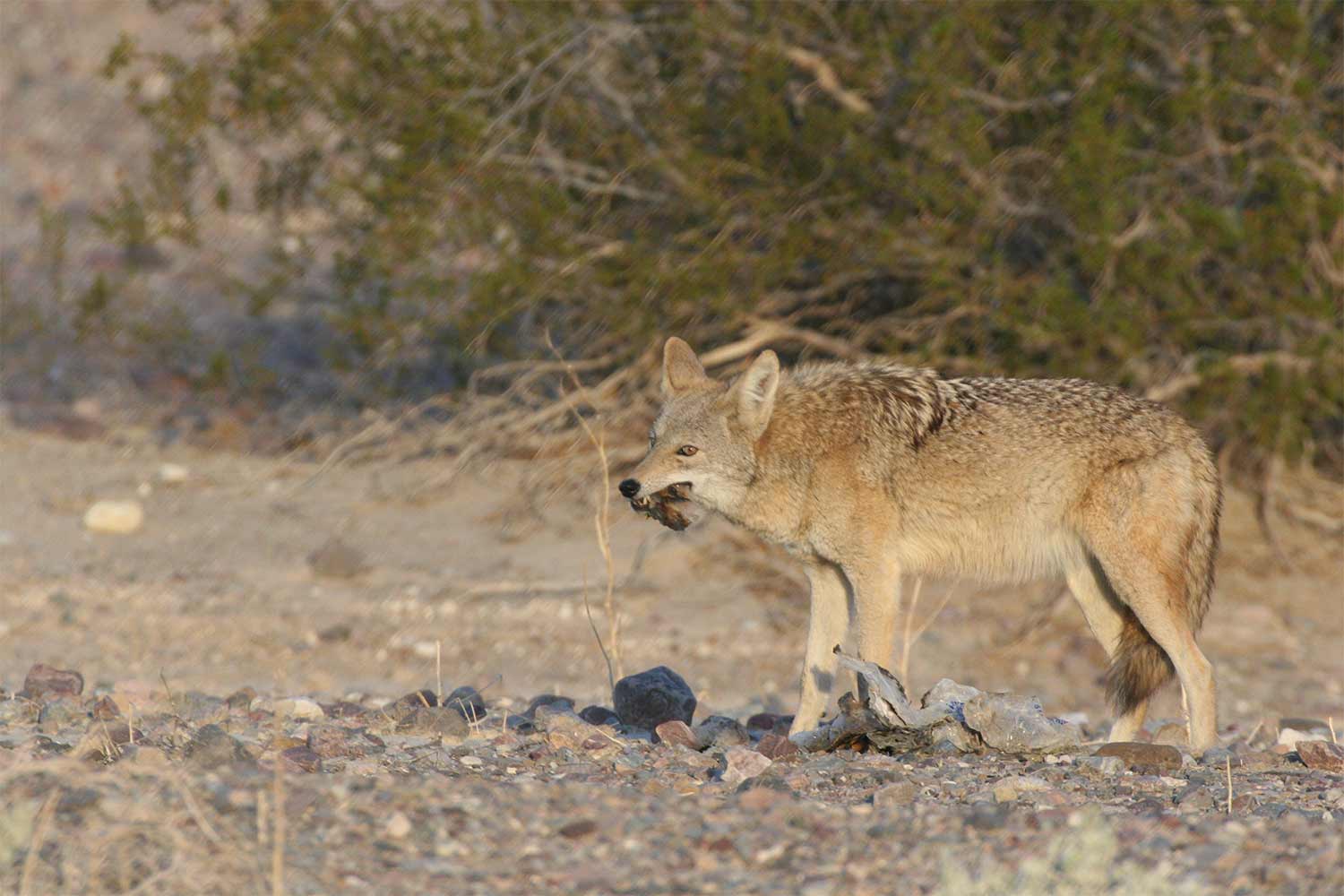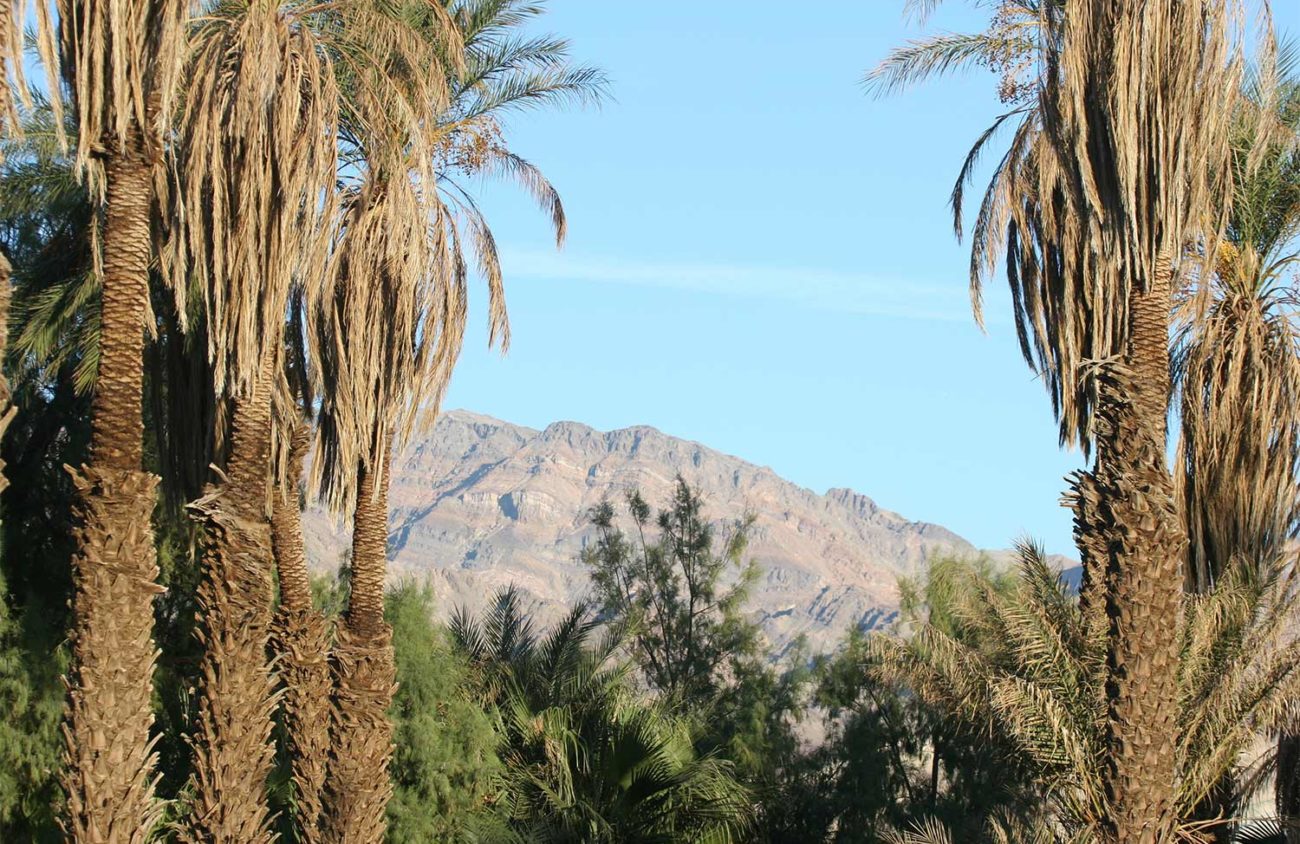I can’t walk very far across wide open desert flats anywhere without humming to myself “Cool Water,” Bob Nolan’s 1930s singing-cowboy classic about a thirsty miner and his mule facing death in the parched desert. It ends on a heavenly note, as the exhausted miner muses about Dan, the mule: “Like me, I guess/ he’d like to rest/ where there’s no quest/ for water — cool, clear water.”
While hiking in Death Valley National Park, the song plays nearly nonstop in my brain. The cool and refreshing thing about the valley, which we recently visited for at least the 10th time in my life, is that it’s embedded in the myth of the American West, a deep fantasy involving brave pioneers, lonesome cowboys, noble Indians and desperate prospectors facing certain death as they seek the transcendence of gold.
The truth is, Death Valley is as much a creation of Hollywood as it is an actual place. Even the name is a bit of romantic glitz: the most common cause of death inside Death Valley is not dehydration, rattlesnake bites, lightning strikes, falling off cliffs or shootouts with outlaw bands. Most deaths there occur from simple traffic accidents.
Why do we go there? Everyone who lives in western Oregon knows the winter blahs; Death Valley is a perfect escape. The stark terrain at the bottom of the valley is dangerously hot in the summer — temperatures above 130 degrees F have been recorded at the delightfully named Badwater, where the elevation is 282 feet below sea level — but in February you can reasonably expect comfortable hiking weather with a fair amount of sun.
You also find extraordinary quiet and solitude in the 3.4 million acre park, which, despite its proximity to Southern California and Las Vegas, has missed much of the overcrowding that has begun to wreck the outdoor experience in places like Yellowstone and Yosemite.
My wife and son and I have visited Death Valley in the winter for nearly 40 years, enjoying accommodations ranging from a tent on the desert floor to a travel trailer in a park campground to a motel room at Furnace Creek, the headquarters village of the park, or even, on occasion, a room at the posh Furnace Creek Inn.
Though you can fly to Las Vegas and rent a car — Furnace Creek lies just 140 miles from the Strip — we much prefer driving the 800 miles each way from Eugene. The inland route via northeastern California and down into Nevada is a two-day blue highway adventure that takes you through mountains and forests, interrupted by a quick 40 miles or so on I-80 through Reno, and into empty sagebrush high desert before finally dropping down into the valley itself.
Just before you reach the park boundary, stop in to see the ruins of Rhyolite, a once-bustling early 20th century boomtown of 4,000 people that went bust when the gold ran out after just a few years. The remains of the elegant railroad depot, the sturdy bank, the little jail and the peculiar house built out of 50,000 beer and whiskey bottles are among the highlights. No admission charge.
But the best part of visiting Death Valley is walking. Furnace Creek, where we’ve usually stayed, has a wide range of easy to moderate desert hikes close at hand. A simple introduction is to walk the paved 1.5-mile bike trail that leads from the visitor center to Harmony Borax, the ruins of an old borax mining operation, from which 20-mule teams once hauled enormous wagons full of borax to the nearest railroad terminal. 20 Mule Team Borax became a brand name for the company that sponsored the popular television show Death Valley Days, narrated — in his last acting job before entering politics — by Ronald Reagan.
The classic view of Death Valley’s colorful badlands can be enjoyed from Zabriskie Point, just about 4 miles south on Hwy 190 from Furnace Creek. You can drive there and stroll up a short paved path to the overlook. But much more fun is to drive instead a few miles south on Badwater Road to Golden Canyon and walk the 3-mile trail that takes you past spectacular Manly Beacon and up to the overlook at Zabriskie Point (yes, the movie of that name was filmed there), and then follow trail signs back down via Gower Gulch, for roughly a 6.5-mile loop.
Enlarge

Enlarge

One of my favorite easy walks involves driving out the long, unpaved and usually empty Westside Road, parking at any convenient pullout and walking for as long as you want. The road passes the strange salt formations called the Devil’s Golf Course and continues past the remote grave of Frank “Shorty” Harris, who first discovered gold in 1904 at what became Rhyolite. Harris’ epitaph reads, at his own request, “Here lies Shorty Harris, a single blanket jackass prospector.”
Other interesting hikes a little farther out include beautiful, if slightly more challenging, Mosaic Canyon and the Mesquite Flat Sand Dunes, both near Stovepipe Wells, a half-hour drive north of Furnace Creek.
The palm tree-filled complex at Furnace Creek contains the park visitor center, where you can pay the park’s $30 per vehicle admission fee, pick up a map and get questions answered by the rangers. Do check here for weather conditions and road closures before venturing afield.
Furnace Creek offers lodging and dining in two large private holdings owned and run by Xanterra Travel Collection, a corporate successor to the Fred Harvey Company that helped develop cultural tourism in the Southwest U.S. in the late 19th century. The larger and more affordable Furnace Creek Ranch, now called The Ranch at Death Valley, takes up much of Furnace Creek with motel rooms and cabins; up the hill to the south is the beautiful but pricey old Furnace Creek Inn, now the Inn at Death Valley.
On the last night of our visit, we made dinner reservations at the inn. Arriving a few minutes early, we took a slow walking tour of the elegant century-old hotel’s lobby and library, where I was surprised to find a number of paintings by prominent American Western artists, from Frederic Remington to Walter Ufer. I was still mulling this when we were seated in the dining room, and I looked up to discover a large Thomas Moran landscape, “Children of the Mountain,” hanging just three feet from my elbow.
The paintings come from the private collection of billionaire investor Philip Anschutz, a major collector of Western art who has a controlling interest in Xanterra.
Oddly, considering it was painted by such a well known documentarian of the American West, the early Moran painting — first exhibited at the Exposition Universelle in Paris in 1867 — depicts not a scene from Death Valley or Yellowstone, but an imagined picture set in the European Alps.
But hey, that works — Death Valley is practically all fantasy anyway.
See more about Death Valley at NPS.gov/deva.
